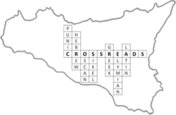Digital edition and the materiality of non-serial instrumentum inscriptum. A pilot project on Roman bronze seals (signacula) in Sicily
The publication of non-stone inscriptions, and in particular of those texts preserved on a wide variety of objects of different nature and function gathered under the traditional definition of instrumentum inscriptum, represents one of the most interesting current challenges for digital epigraphy.
Some of the most ambitious projects to date concern the so-called serial instrumentum inscriptum: inscriptions reproduced in multiple copies by stamping different objects, primarily for commercial purposes. Among the most significant is the ERC project EPNet - Production and Distribution of Food during the Roman Empire: Economic and Political Dynamics (http://www.roman-ep.net/wb/), which publishes one of the richest databases for amphorae and epigraphy, including stamps, graffiti and painted inscriptions (http://ceipac.ub.edu/), freely available through a Data Visualization & Exploration interface (https://romanopendata.eu). This is built on the Ontology-Based Data Access (OBDA) paradigm, where the different datasets are virtually integrated through a conceptual layer (an ontology).
At the same time, there are also works dedicated to non-serial instrumentum inscriptum: ‘objects of use’ bearing unique texts of different types. The SigiDoc project (https://sigidoc.raketadesign.com/en/), for instance, provides XML-based and TEI-compliant encoding standards, similar to EpiDoc, for the description and edition of Byzantine seals: as such, it aims to establish a set of rules and guidelines to publish Byzantine seals in digital form.
Non-serial instrumentum have been included, albeit in a non-systematic way, also by some of the main online epigraphic databases, with different approaches and, consequently, outcomes. This has highlighted the advantages, especially for prosopographic research, of directly relating texts on different supports (S. Orlandi, 'L’instrumentum inscriptum non seriale: potenziale informativo e varietà di approcci alla sua digitalizzazione', Historika X, 2021 https://doi.org/10.13135/2039-4985/5157). But it also demonstrates the limits of fixed templates, inadequate to handle multiple texts, placed on different parts of the object, with different writing techniques (P. Pacchiarotti, G. Fatucci, L. Ebanista, S. Gozzini, F. Lamonaca, I signacula del Museo Nazionale Romano: un’esperienza didattica tra studio e EDR http://www.edr-edr.it/Documenti/Signaculaposter.pdf).
In the framework of the ERC project Crossreads: Text, materiality, and multiculturalism at the crossroads of the ancient Mediterranean, the incorporation into the I.Sicily corpus of signacula coming from Sicilian collections and archaeological contexts and their impressions on different materials is serving as a pilot project to address the challenges of creating a digital edition of serial and non-serial instrumentum, using TEI standard EpiDoc and following FAIR principles, in order to overcome most of the limitations of previous approaches.
Roman signacula are one of the most relevant classes of instrumentum inscriptum for information on the economy and administration in Antiquity, both in the public and private sphere (https://crossreads.web.ox.ac.uk/article/blog-no-3-building-corpus-roman-inscribed-bronze-seals-sicily). Their inclusion in a project that aims to collect in a single digital epigraphic corpus all the inscriptions of ancient Sicily, on all kinds of supports and in the different languages attested on the island, will allow us to enhance the documentary value of these artefacts: firstly, by better delineating the identity of the signacula owners through matching the signacula with other inscriptions of different types; and secondly, by identifying - through the evidence of the impressions - the contexts of use of these objects across the region, in the different historical periods.
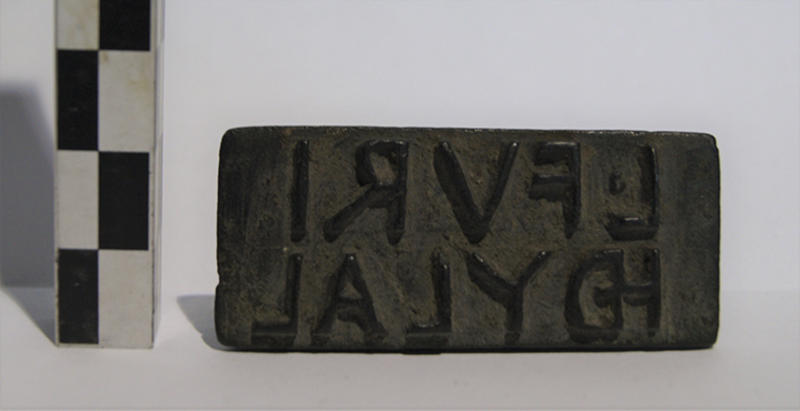
Fig. 1: Bronze signaculum of L(ucius) Furius Hedylalus, Unknown provenance, Museo Civico di Castello Ursino, Catania (photo I. Gradante)
From a technical point of view, the flexibility of EpiDoc makes it possible to develop a customized template, which can be further modified in the future according to need. This enables an effective and precise description of the artifacts, integrated with full editions of the texts present on the different parts of the object (lamina, handle), including the orientation of the text and the different writing techniques, as well as the presence and position of any symbolic and decorative elements. All these data are machine-readable, allowing potentially unlimited query possibilities, as well as future interoperability.

Fig. 2: As above, detail with the initials of the owner engraved on the bezel (photo I. Gradante)
The coexistence of signacula and impressions in the same corpus has also required consideration of the most effective way to outline - and above all visualise - the hierarchical relationships between the artifacts and their impressions and, at the same time, the horizontal connections between multiple signacula, derived from a common model or archetype, or multiple impressions of the same signaculum, identified on different supports.
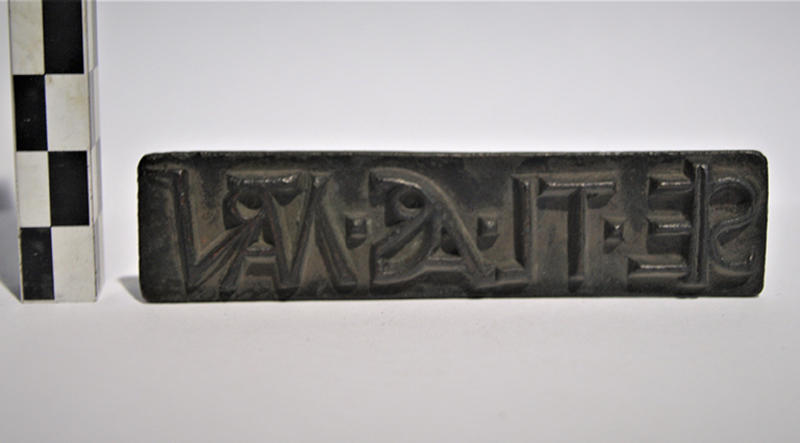
Fig. 3: Bronze signaculum of uncertain reading with urceus (jug) engraved on the bezel. Unknown provenance, Museo Civico di Castello Ursino, Catania (photo I. Gradante)
From this point of view, the Sicilian material offers an extremely varied and interesting repertoire: in particular, the presence of signacula impressions in the archaeological contexts of the Syracusan catacombs has also raised the issue, in terms of data models, of capturing the relationships between inscriptions of different types (i.e. signacula impressions and funerary inscriptions) on the same support (ISic000889 and ISic010005), or in the same physical setting.
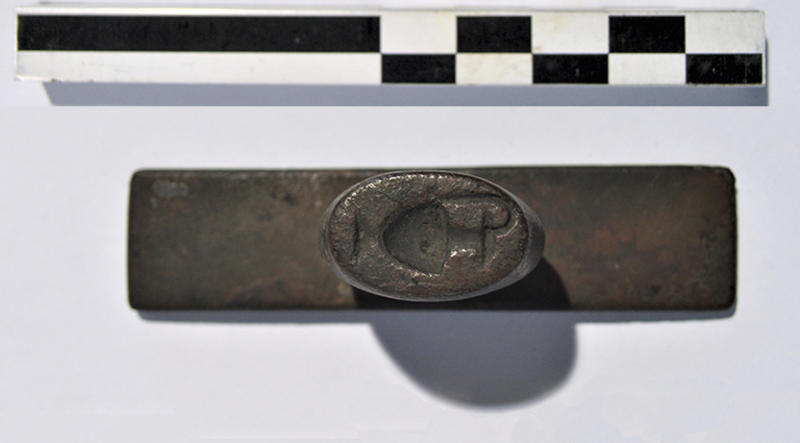
Fig. 4: As above, detail of the bezel featuring a stamp of a urceus (photo I. Gradante)
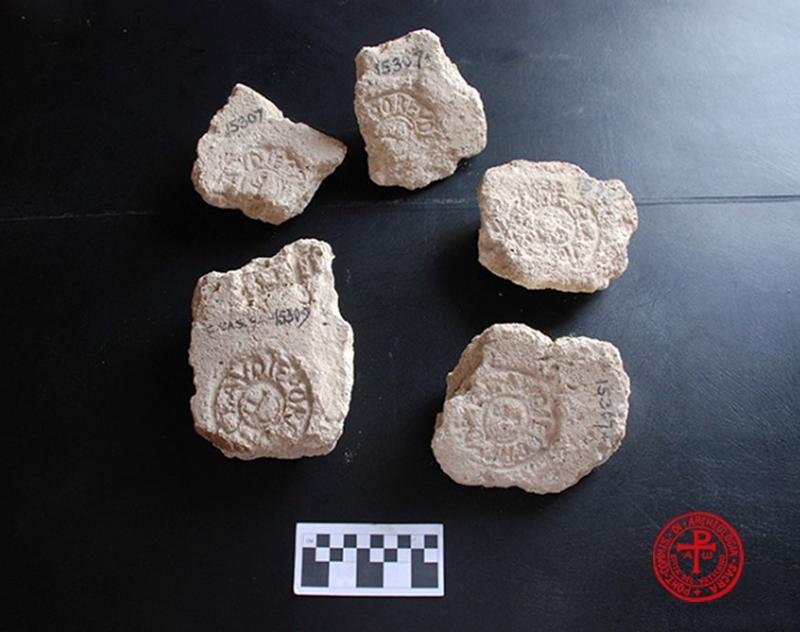
Fig. 5: Multiple impressions of the circular signaculum of Claudia Eudocia c(larissima) f(emina) (ISic010008) on fragments of mortar belonging to a tomb cover from the catacombs of Vigna Cassia, Siracusa. Antiquarium Pontificia Commissione di Archeologia
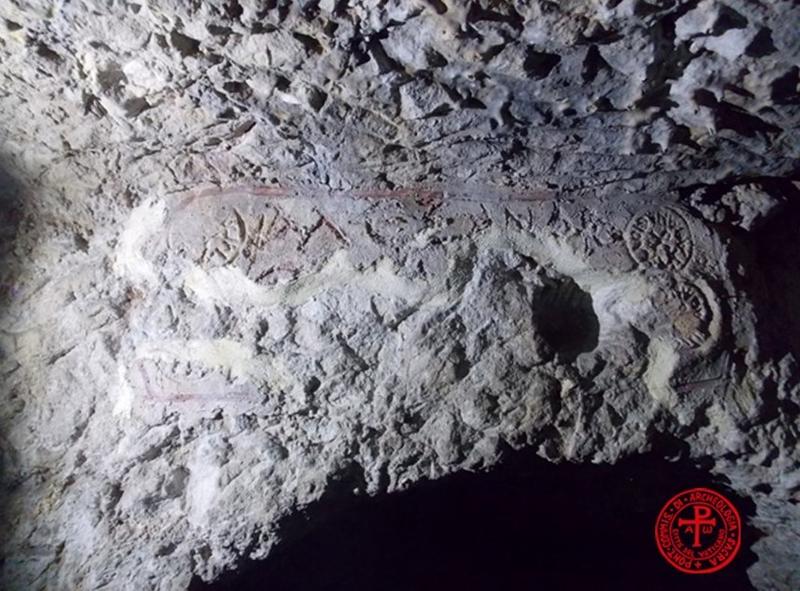
Fig. 6: Multiple impressions of the circular signaculum of Athanasios (ISic010005) on the plastered front of the arcosolium of Alexandros (ISic000889). Catacombs of S. Giovanni, Siracusa (photo I. Gradante).
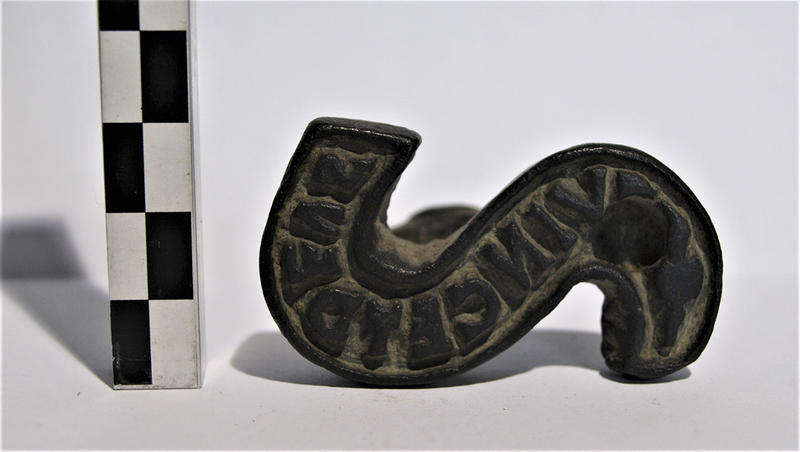
Fig. 7: Bronze signaculum with S shaped lamina and Christian formula vincet Deus. Unknown provenance, Museo Civico di Castello Ursino, Catania (photo I. Gradante)
The material aspects of the signacula have been often neglected, both in print and digital editions, considerably limiting the study and the determination of typological classifications based, for example, on the shape of the lamina and the handle, or on the characteristics of the letters, as well as on the metallic composition of the objects themselves (commonly being differentiated as either ‘bronze’ or ‘lead’ by their appearance and weight). Importantly, materiality often corresponds to specific functional needs, related to the context of use of the objects and the materials that had to be stamped. In particular, archaeometrical investigations being carried out in the framework of the Crossreads project and presented below may shed new light on manufacturing processes of these objects, including sources of the raw materials, contributing to the study of socio-economic and cultural contexts.
I.G.
Crossreads - materiality
In addition to innovations in the digital editions of signacula, Crossreads aims to investigate the material aspects of such objects, providing additional information on the technical aspects of their manufacture, and on conservation issues.
Although the discrimination between bronze and lead is straightforward, it appears that a variety of bronze-like alloys have been used in the production of signacula, possibly as a result of recycling metal. Nevertheless, it is nowadays possible to provide chemical data on the metal alloys for further comparisons, shedding light onto socio-economic and cultural contexts.
Portable X-ray fluorescence instruments have already shown their powerful role in archaeometrical investigations, particularly on metals: the analysis is completely non-invasive and allows us to obtain the composition of the alloy within a few minutes. Preliminary results on the signacula housed in the Museo Archeologico Regionale “Paolo Orsi” in Siracusa, and on those in the Museo Civico Castello Ursino in Catania, show large variations in bronze composition, often indicating the presence of lead, in addition to copper and tin, probably used to decrease the melting point and improve the workability of the metal. Moreover, it appears that the alloy composition influences the conservation state of a signaculum, both in terms of patina formation and corrosion, as well as its resistance to wear and tear.
The chemical data acquired within Crossreads are unique for signacula, as no such analyses have been reported in the literature to date, with the single exception of a lead signaculum from Ferento (Pavolini C., Di Stefano Manzella I., Pelosi C., 2011, 'Archeologia, epigrafia e archeometria di un timbro in piombo “in planta pedis” rinvenuto nello scavo di Ferentium (Viterbo)', in Daidalos 12, 121-145).
It appears then that signacula are also a current challenge from the archaeometrical point of view, especially because of the lack of chemical data in the literature. Thanks to close interdisciplinary cooperation within Crossreads, it will be possible for the first time to evaluate if chronological, geographical, or epigraphic features correspond to specific alloy composition, and to promote further discussions across disciplines.
A.C.

